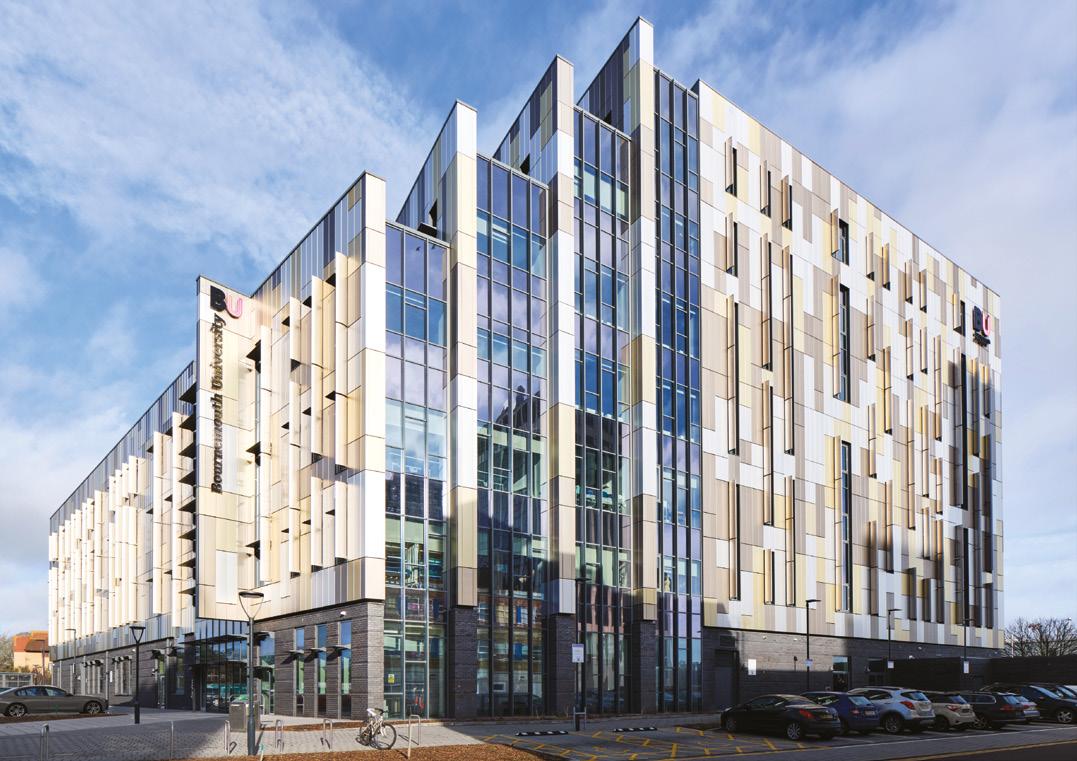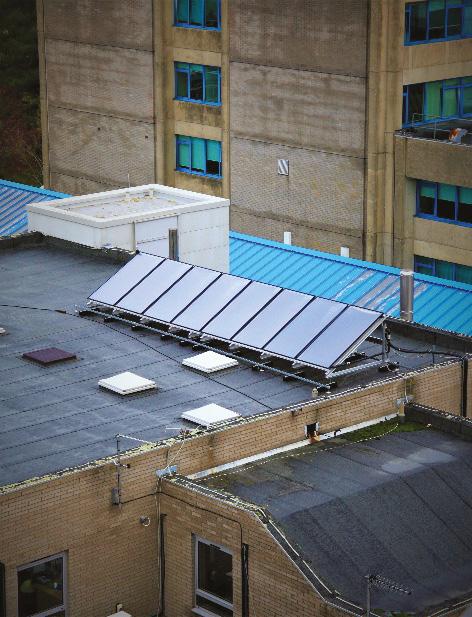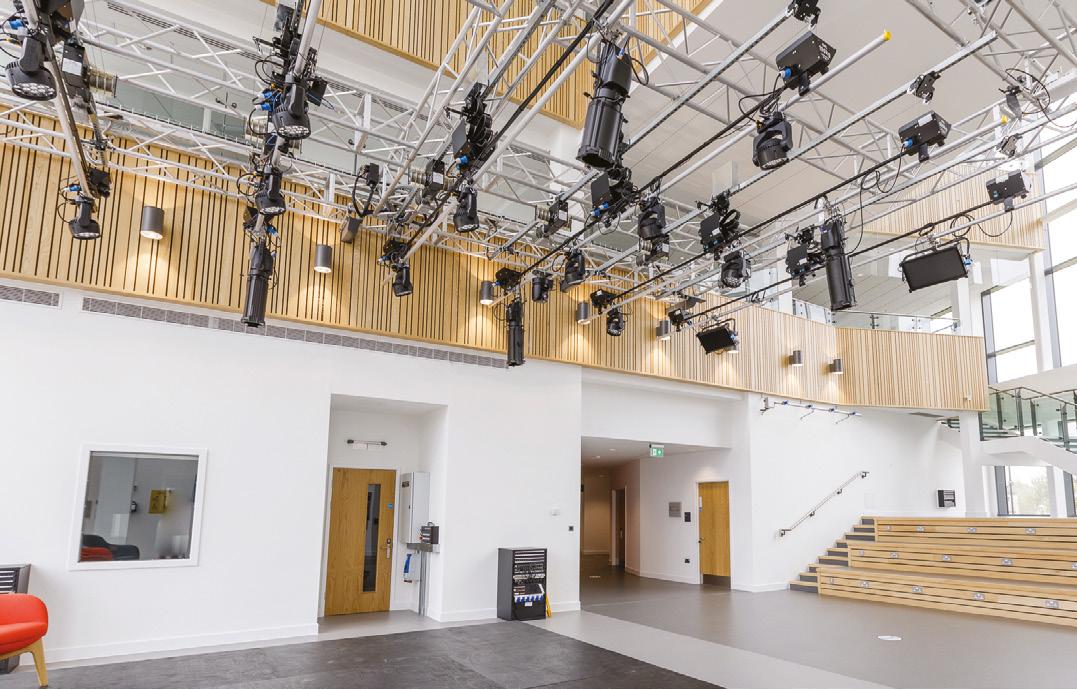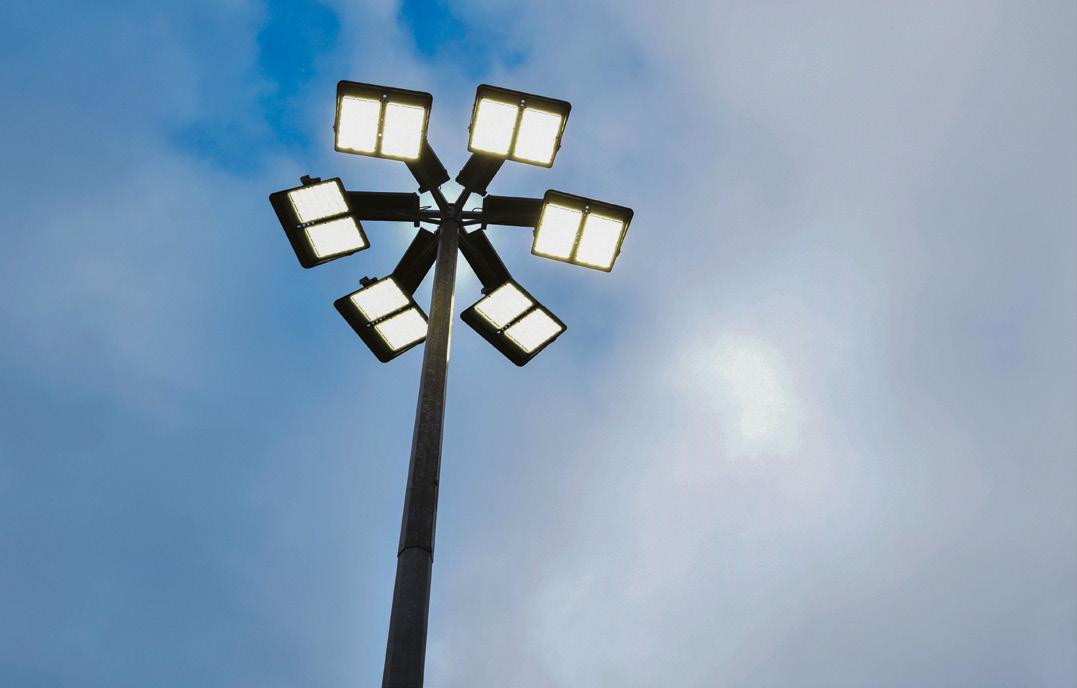
4 minute read
Objective 5: Rapidly reduce GHG emissions through technology solutions
Core to our CECAP is achieving a 50% reduction in our emissions by 2030/31 against a 2018/19 baseline. Achieving this includes implementing projects across all activities which reduce our emissions. This requires renewable energy and water technologies, optimising building energy and water use and moving from gas to electricity for heat and hot water.
Technologies and energy projects completed in 2020-2021:
Bournemouth Gateway Building
Bournemouth Gateway Building, our second largest building and the new home for BU’s Faculty of Health & Social Sciences was added to the estate in late 2020. A BREEAM Excellent Building, its top scoring areas from BREEAM were Management (100%), Water (100%), Transport (82%) and Energy (78%) as environmental impact was threaded throughout the design and building process. Key sustainability features in BGB include: • Solar photovoltaic panels producing up to 127kw of renewable electricity • Ground source heat pumps (GSHPs) to provide low-carbon heating and cooling • Chilled beams for low energy cooling distribution from the GSHPs • Dry air coolers and adiabatic coolers • Metering to ensure we can monitor and maximise energy efficiency • Rainwater harvesting to capture and use rainwater • LED lighting throughout entire building • Ample bicycle storage and active travel facilities.
We now have three buildings (Bournemouth Gateway Building, Fusion Building and Student Centre) that use ground source heat pumps to produce renewable heat. The Poole House biomass is a renewable source of heating on campus, which burns sustainably sourced local wood chips to heat the building. The ash produced from this process is then used to fertilise the next generation of trees.
Dave Archer, Energy Manager
Poole House Solar Thermal
During 2020-21 BU installed its first onsite Solar Thermal hot water system in Poole House. This generates renewable heat from the sun’s energy to provide hot water for the building. This system is estimated to save over 2.2 tonnes CO2 equivalent per annum.


PGB stage lighting project
Installation of new LED stage lighting in PGB will save over 100,000 kWh of electricity per year through a combination of direct energy savings due to the far higher efficiency of the LED studio lights and a reduction in cooling demand due to lower heat generation from the high efficiency lighting. Our investment this year includes the replacement of the internal and external lighting to LED lighting. Externally the lighting for the hockey and rugby pitches has been replaced with energy efficient LED lighting. The waste management on site also has been vastly improved with new waste segregation enabling easier recycling and reducing littering during sporting events. We are continuing to develop our sustainability approach for this sports facility. We plan to invest in new metering to enable us to evaluate energy, water and gas consumption to identify leaks and improvement opportunities and we are exploring ideas to move the gas supply away from LPG to a renewable source.

Chapel Gate LED floodlighting
This year we have worked to improve the energy and waste performance of our newly acquired sports facilities at Chapel Gate. This is a is a 65-acre sports facility based next to Bournemouth Airport, and home to a variety of sports including football, rugby, hockey, cricket, squash, table tennis, archery and rifle shooting.
More efficient computing through our UPS project
Phases 1 and 2 have been completed on upgrading the communications rooms uninterrupted power supply, with phase 3 beginning this year. This will provide a 7% decrease in energy consumption per communications room due to reduced cooling loads and enhanced efficiency.
Technology next steps for 2021-22
• A new 22kWp solar array will be installed in the new reporting year in Jurassic House, which will save around 5 tonnes of CO2e a year. • A project has been approved to install submetering at
Chapel Gate to assess energy and water use at this site and identify future energy and water projects. • Three of the existing high voltage transformers at
Talbot Campus will be replaced with more efficient ones, which will reduce the electricity use on site by up to 5%. • Energy Conservation Measures e.g. installation of
LED lighting will continue to be rolled out across the university, funded by the Revolving Green Fund. • A project to provide fresh air cooling to comms rooms is beginning this year. • Software and hardware retrofit solutions to current equipment being investigated. • A feasibility project for a district heat network for
Talbot Campus is being planned.
We have increased our renewable generation
We have worked hard to increase our renewable generation on site and this year our estate increased its number of solar PV arrays from seven to eight thanks to an array added onto our new Bournemouth Gateway Building.
The amount of electricity produced on site increased from 450 MWh to nearly 500 MWh, providing 5.4% of our electricity and 9.6% of the heat for our buildings.
Increase in onsite renewable and low carbon energy generation from 2011-12 to 2020-21
1,400,000
1,200,000
1,000,000
Generation per year (kWh) 800,000
600,000
400,000
200,000
0
2011/ 2012 2012/ 2013 2013/ 2014 2014/ 2015 2015/ 2016 2016/ 2017 2017/ 2018 2018/ 2019 2019/ 2020
GSHP output (kWh) Biomass output (kWh) Electricity generated onsite (kWh)
2020/ 2021
BU onsite renewable and low carbon energy generation by year since 2011-12
Energy and water projects undertaken by BU aim to increase energy performance and efficiency, reduce leaks and unexpected high consumption and increase on site renewables.






